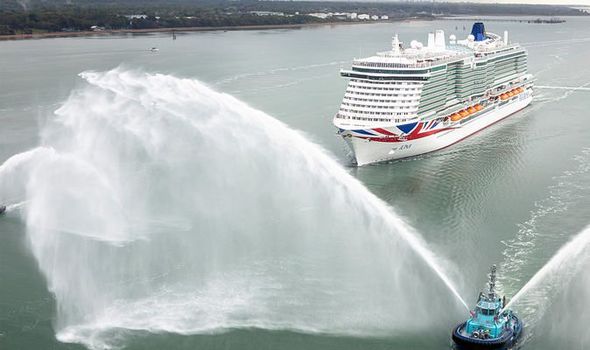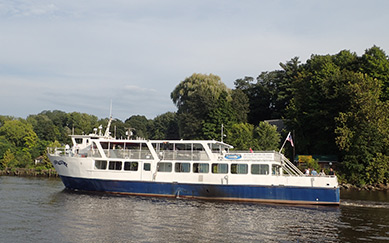
Cruising on the Danube river is a unique way to explore central and eastern Europe. This beautiful river crosses the borders of Europe's countries, including Austria, Hungary and Slovakia. Its beautiful scenery and historical significance make it a popular attraction.
River Cruises along the Danube can be a wonderful way of experiencing the region's rich heritage, culture, and natural beauty without the added stress of traveling with large groups. Smaller boats and fewer guests on a riverboat means that you can visit places that larger ocean cruise ships cannot, such as quaint towns and castles.
The Best Time to Cruise on the Danube
Autumn and spring are excellent times to travel the Danube as there's less people at major landmarks. Winter is also popular because of the charming Christmas markets, and beautiful cities lit with holiday lights.
Cost of a Danube River Cruise
While the price of a Danube River cruise will vary depending on which company you choose and how long you stay, it generally includes accommodations, meals onboard, as well as transportation. Some itineraries offer free activities and excursions.

How to Choose the Best Cruise
An 8-day Danube River cruise for most travelers is a great length of travel. This is the perfect length of time to experience the Danube's highlights, from Budapest and Vienna to Bratislava or Salzburg.
You may be interested in a longer river cruise. There are several itineraries that last from 11 to 15 days. These cruises can take you from Holland to Germany and to Hungary in the Eastern European countries, giving you an opportunity to see the entire area.
River cruises are a wonderful choice for families with children. There are many activities offered, such as horse shows or goulash-making challenges, marionette and concert shows, strudel making, and other fun stuff.
Many of the Danube River cruise lines offer accommodations for people with mobility impairments. These boats have specially designed cabins which are wheelchair accessible and feature wider doors.
You should check with Adventure Life about whether Danube riverboats have Wi-Fi so you can keep in touch with family and friends while onboard. The majority have WiFi available in common areas. However some boats may not have WiFi reception in their rooms. Others charge an additional fee for access.

When cruising on the Danube, you should pack light to ensure that you have plenty of room for walking around on excursions and sightseeing. Comfortable clothing should not show too much skin. A pair of walking shoes is a good choice for day-to-day activities.
To protect yourself from any unanticipated hiccups while on the river cruise, such as lost baggage, delayed luggage, or connection problems, you should consider buying a river cruise insurance policy before you board.
The Danube is one of Europe's most beautiful rivers and must-sees for all those who love to see nature at its best. The countries that border the river are filled with breathtaking landscapes and a variety of national parks, making it the ideal destination for anyone who appreciates getting away from the hustle and bustle of modern life to enjoy a more peaceful and natural setting.
FAQ
Are there any cons to cruising?
When considering the pros and con's of cruising, there are some things you need to be aware of. Some people may not wish to spend their whole vacation on a boat. Some people prefer to be closer to the shore or stay in a hotel. Some may not like being so far away from the land. These fears can be easily overcome if you choose a cruise with plenty time ashore.
Are you required to have a passport to travel on a cruise ship?
A passport is essential for anyone who wants to travel around the globe. It lets you visit any country without requiring visas or any other paperwork.
In some countries, you may not be allowed to enter if your passport isn't valid. It allows you longer stays abroad.
How does cruising work?
When you book a cruise, you pay a deposit (usually $50-$100) when you reserve your cabin. Your balance is due 30 days before departure. You will check in to your cabin once you have arrived at the port. Afterward, you may participate in one of the many onboard activities.
Statistics
- You'll need to budget around $80 per person per day for this option – and an additional 18% gratuity. (travel.usnews.com)
- In addition, 10 to 15 percent gratuity is typically added to bar bills — for alcohol and soft drinks — and gratuities are applied to spa treatments. (cruiseline.com)
- You can save 15% off the total price if you book in advance of your trip. (travel.usnews.com)
- The line estimates savings of 50% when you purchase this bundle. (travel.usnews.com)
External Links
How To
How to keep safe while on a cruiseship
On a cruise ship, there are many things you should know before embarking on your journey. Behave properly onboard to avoid any problems. Here are some safety tips you can use to make sure you have a great trip.
-
Always be aware of what is happening around you. On board a cruise ship, people tend to congregate together, especially during meals. It's easy to become distracted from your duties because you're surrounded by people who want to chat and eat. This shouldn't distract you from the work you are supposed to do. If you notice someone engaging in dangerous behavior, such as smoking, or drinking alcohol, politely tell them to stop.
-
Your room key should always be with you on board the ship. They'll be able to find you quickly if you need it. Keep your passport with you.
-
Your valuables should be kept out of reach. Most cabins include drawers under the beds. It is a good place to store valuables like money, credit cards, passports, etc. You should also make sure that nothing of value is visible. You should keep your bags hidden away from others.
-
Stay hydrated. Cruise ships provide plenty of water, but sometimes it's hard to remember to drink enough. Use the free bottled water that is available onboard. Do not become dehydrated. Dehydration can lead to fatigue, crankiness, and even fights.
-
Listen to announcements carefully. Announcements are posted everywhere, including on TV screens and public address systems. They include safety procedures and emergency exits as well as weather reports. These announcements will be of great importance. They might save your life!
-
Do not leave your cabin without first locking the door. No matter how kind a crew member might seem, your cabin should be locked. Thieves are known to break in through doors that are not locked. Ask a crew member first if you need to use the bathroom.
-
Avoid going overboard alone. It can take some time for the ship's crew and you to be rescued from the water. Your body may be attracted by sharks and other sea creatures. The best thing to do is wait until help arrives.
-
Never smoke inside the elevator. These elevators are pressured, which means smoke can quickly build up. Get off immediately if you feel dizzy or lightheaded. Even though the air outside is fresh, it doesn't mean breathing is safe.
-
Be familiar with the evacuation procedures. Every year, thousands die from being trapped in an elevator. If an emergency occurs, follow the instructions on the screen.
-
You should be familiar with fire drills. Fire drills are held regularly, often once per day. Everyone on deck must evacuate during a drill. Follow the instructions of the crew members. Once the drill has been completed, return back to your cabin.
-
Ask questions before accepting food and drink. Cruisers are often concerned about food poisoning. Many people don’t know that certain foods may not be safe to consume while aboard a cruise ship. On most cruise ships, raw oysters are prohibited. If you aren't sure if the food being offered to you is safe, politely decline and choose another meal.
-
Take care when you use the pool. Inadvertently falling into pools has been a frequent occurrence. If this happens to you, tread water until someone notices you. You may also slip and fall on the deck. So always wear proper footwear and pay attention to your surroundings.